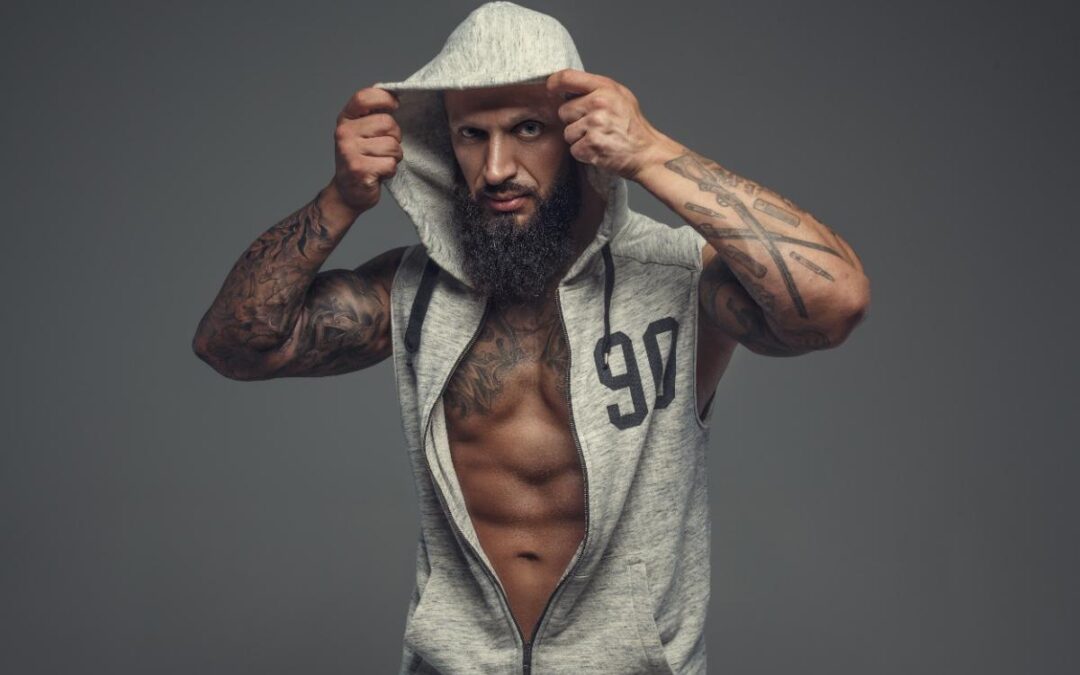MMA (Mixed Martial Arts) is one of the world’s fastest-growing sports.
But beyond impressive sporting performances, MMA fighters have become influential fashion and lifestyle icons.
Their clothing choices, lifestyle routines and presentation styles inspire a growing number of fans and brands alike.
This article explores how MMA fighters have established themselves as trendsetters, in four detailed parts.
- The emergence of MMA fighters as fashion icons
MMA fighters are no longer just known for their exploits in the ring.
Today, they play a key role in the fashion industry.
Athletes like Conor McGregor, Israel Adesanya and Ronda Rousey have not only dominated in their respective disciplines, but have also captured the public’s attention with their keen sense of style.
MMA style is marked by a blend of functional athleticism and high fashion.
Fighters are often seen wearing designer clothes, tailored suits, or trendy streetwear.
Their influence is such that prestigious fashion brands collaborate with them for advertising campaigns, capsule collections or dedicated clothing lines.
The appeal of MMA fashion lies in its authenticity.
Fighters embody strength, determination and resilience, qualities that many wish to express through their clothing style.
What’s more, their visibility on social networks amplifies their ability to dictate trends, making them veritable fashion icons for a generation that values authenticity and power.
- The Lifestyle of MMA fighters: A model for the active generation
The lifestyle of MMA fighters is not limited to what they wear, but also encompasses how they live, train and care for themselves.
These athletes embody a rigorous lifestyle, focused on intensive training, dietary discipline and mental well-being.
Their influence on lifestyle is particularly noticeable among the younger generations, who are looking to adopt healthier, more active habits.
Training routines, specific diets and recovery techniques such as yoga and meditation, popularized by MMA fighters, are now followed by millions of people worldwide.
Fighters frequently share their daily routines on social networks, offering a glimpse into their lives beyond the ring.
These shares have become sources of inspiration for those wishing not only to improve their fitness, but also to embrace a more balanced, performance-oriented lifestyle.
- The impact of MMA fighters on streetwear fashion
Streetwear, with its roots in urban culture, has always been fertile ground for innovation and personal expression.
MMA fighters, with their rebellious attitude and distinctive style, have helped redefine the genre by incorporating elements of their own discipline.
MMA clothing, such as fight shorts, hoodies and jogging suits, has become a staple of the streetwear world.
Sportswear brands such as Reebok, Under Armour and Venum have capitalized on this trend by creating MMA-inspired collections, often in collaboration with renowned fighters.
This fusion of MMA and streetwear has created a new dynamic in the fashion market.
MMA-inspired pieces are not only functional for training, but also convey a sense of style.
They also convey an image of strength and resilience, making them attractive to a wider audience, including non-sports enthusiasts.
MMA fighters have thus played a key role in popularizing functional streetwear, making it a respected fashion choice both in gyms and on big-city streets.
- MMA fighters: brand ambassadors and influencers
No longer content to fight in the octagon, MMA fighters have become central figures in the world of marketing and advertising.
Their growing popularity makes them partners of choice for brands seeking to associate themselves with values of power, determination and success.
Many brands, from sports equipment manufacturers to luxury fashion labels, have enlisted MMA fighters as ambassadors.
These partnerships go beyond mere endorsements; they include creative collaborations where fighters actively participate in the design of products or advertising campaigns.
For example, Conor McGregor, known for his flamboyant style, has collaborated with several brands to create clothing collections that reflect his unique taste.
Similarly, other fighters such as Georges St-Pierre or Anderson Silva have lent their image to brands in campaigns that blend sporting performance and lifestyle.
These collaborations reinforce the idea that MMA fighters are much more than athletes: they are influencers capable of shaping trends in fashion and lifestyle.
Their recommendations and style are followed by millions of fans around the world, making them key players in marketing and fashion.
Conclusion:
MMA fighters have transcended their role as athletes to become influential trendsetters in fashion and lifestyle.
Their impact is visible in streetwear, active lifestyle and modern branding.
By combining style, performance and influence, they set new standards that inspire not only MMA enthusiasts, but also a wider public looking to embrace a powerful, authentic lifestyle.

